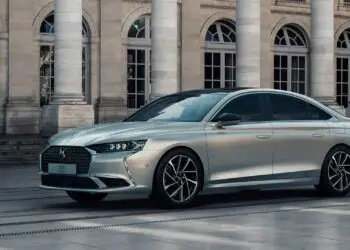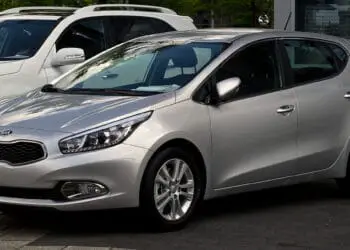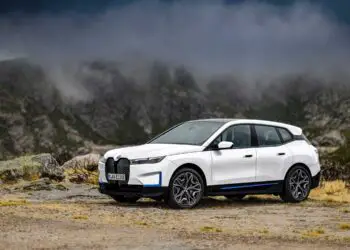Mitsubishi Outlander PHEV, the third-generation PHEV second facelift. let’s talk about how interesting this powertrain is.
Overview
The Mitsubishi Outlander is a popular compact crossover or even an SUV as some like to call it. with an internal combustion engine, it even comes as a seven-seater. an ideal car to drive your kids to school, do shopping, go on vacation. but as far as technology goes. it’s nothing particularly exciting. but in 2012 Mitsubishi launched a plug-in hybrid version. PHEVs are nothing new and their history dates back to 1899. and the learner portion mixed a hybrid. in the 1960s GM experimented with plug-in hybrids as well. and then in 2003, The Renault automobiles company offered a Kangoo PHEV van. and then there were fiscal, Ford, Toyota, and others.
Mitsubishi Outlander PHEV engine
However, the Mitsubishi hybrid system is a bit more complicated. most of the time the Mitsubishi Outlander PHEV is powered by two electric motors. one per axle. they get their power from a traction battery under the floor. the traction battery can be charged from an electric socket or via a petrol engine. which can act as a generator or lock in the Chevy Volt or Opel Ampera. In certain conditions, it can also power the front wheels. all this is supposed to ensure optimum efficiency.
Mitsubishi Outlander PHEV range
What’s it like in real life. the pre-facelift under PHEV could drive 30 km, maybe a 40 km on batteries. and then it went into hybrid mode. it would then use about 6l per 100 km (6 liters per 100 kilometers) in the city. and on the motorway, it was a gas guzzler. they refreshed out under PHEV he gets slightly denser batteries which now have 13.8 kWh (13 kilowatt-hours). they should be enough for about 45 km extra-urban and up to 57 km in the city according to WLTP. and indeed I easily got about 50 km around the city without the petrol engine kicking in.
Performance
The engine has also changed instead of a 2l unit there is now a 2.4l engine which is a bit quieter once it kicks in. because it doesn’t need to Rev us high. so that’s good.
We’ll start with the dynamics in the sport mode. because the Outlander PHEV has a sport mode as well. the two electric motors work to ensure better traction around corners and quicker reaction to the accelerator pedal. the MitsubishiOutlander PHEV is not a speed demon. but it’s not too bad around fast long corners. and not so good around tighter slower bends. the 0-100 km/h time is 10.5 seconds which doesn’t sound much. because this car has 224 HP (horsepower). but this SUV weighs over 1900 kg. so that’s slowing it down ever so slightly.
Fuel Consumptions
The Outlander PHEV can drive in electric. serious hybrid. or parallel hybrid mode. in serious hybrid mode, the petrol engine charges the traction battery. and in parallel hybrid mode. the engine powers the front wheels and sends excess energy to the traction battery. the car can drive up to 135 km/h in pure electric mode. on the motorway below that speed unless we force the batteries to save or battery charge mode.
The petrol engine will shut off every now and then and the car will drive a kilometer or two using accumulated electric energy. then the engine will turn back on. charge the batteries for a bit and then turn off again. at about 120 km/h. The fuel economy should be around 7 liters per 100 kilometers. as you approach 135 km/h. you’ll be getting about 9 liters per 100 kilometers. and if you drive any faster you’ll quickly exceed 10 liters per 100 kilometers.
You can force the car to charge the batteries along the way. for every kilometer driven you’ll get around 1 kilometer of extra electric range. more of the motorway. less on the motorway where the petrol engine spends more time turning the front wheels. of course, the battery charge mode will mean higher fuel consumption but it’s for emergency situations like when you need to drive into a zero-emission zone. and there wasn’t an opportunity to recharge the batteries from the grid.
Charging

Speaking of charging you can do it from a regular home socket. Mitsubishi Outlander PHEV can take up to 3.7 kW for charging. I have a 2.1 kW charger at home. so it takes about 7 hours to charge the Mitsubishi Outlander PHEV batteries from empty to full (0-100%). there is also a shadow socket but that can take only up to 22 kilowatts. that’s still enough to recharge from empty to 80% in about half an hour. it’s also a good idea to use regenerative braking. there are five stages and you can adjust it with paddle shifters after a while you learn to judge distance and you recharge while decelerating. if you like efficient driving this sort of thing should be up your alley.
With the fundamentals charging, why bother with shadow if you can charge only up to 22 kilowatts? probably because it’s cheaper than installing an onboard home charger that could take 22 kW via a type 2 socket.
Let me explain. when charging from home or type 2 socket you are using the cars onboard charger. only so-called rapid charging happens from an external charger. I eat at great bulks with cables sticking out of it. perhaps at the time, the Outlander PHEV was conceived this seemed like a better solution. but 8 years later and two facelifts later, they could have changed it. unless the majority of Outlander clients charge their cars at home anyway. why is that so important, because even if I use a cable to charge from a public charging station. I can unplug the cable at any moment. and even if the car is locked. that means someone can unplug the charger.
Interior

Generally, I’m cautiously pleased with the Outlander PHEV’s powertrain. I understand what it’s meant to achieve. and how it would help me save money while offering a relatively spacious family car.
Because of the boot, regardless of the traction battery, the Outlander PHEV has 463 l of volume. the backrests have adjustable tilt. there is a decent amount of space in the back. the ground clearance is 19 cm. visibility is good and you can have interior finished in quilted leather.
The boot or rather the electric tailgate mechanism it takes about 10 seconds to open and another 10 seconds to close. to put it into context I can press the tailgate button get in the car fasten my seat belt start the car and drive off. and the tailgate will still be closing which I shall demonstrate in this cat away.lol.
Also, as the tailgate is opening or closing automatically. you can’t speed it up manually like you would with hydraulic systems. here you get a mechanism based on cocked wheels which you can only decouple by pressing a button in the cockpit. which takes us nicely into the cockpit.
At first glance, not much has changed there is no copy behind the cupholders these days instead there are more buttons scattered around the cockpit. probably the cockpit was designed before many of the driver aids were invented implemented and made mandatory. so now Mitsubishi is just filling empty spaces with more buttons.
On the left obstructed by the steering wheel and the indicator stalk are three spaces but only two buttons. one for the ESP and another one for the outdated trip computer. above your left knee, there are six more buttons five of which are rectangular and one for the filler cap release is round. the other five are for driver AIDS, EV, pedestrian, warning sound, and for the tailgate. a separate tailgate related button is at the bottom of the center console. but it looks like no other button in the cockpit that’s the electric tailgate decoupling button I mentioned earlier.


Next to it are a USB port and several other buttons including blind-spot monitoring. heated windscreen. heated steering wheel. and eco mode. heated seats are next to the armrest. and next to those buttons is the charging mode buttons. the all-wheel-drive mode switch and a separate sports mode button .an executive decision was made to cram everything into the existing interior. no questions asked and here you go. but that’s not all.
The infotainment system is less bad than it used to be. but it’s still very 90s back in the day Mitsubishi had Rockford Fosgate audio system which was basically a sticker on the dash now there is also a sticker it says Mitsubishi power sound system. and the sticker is a bit crooked .there’s Android auto. but the car power button is pretty much invisible and the plug or the key ignition would normally beep I get it this bit of plastic was ordered by the million. so why bother designing it after just 20 years.
The driver’s seat is electrically adjusted with no memory function but that’s the least of its problems. the real problem is that you can’t set it more upright and there is limited lateral steering wheel adjustment. so I end up sitting with the top part of my back .not touching the backrest. other changes as part of the second facelift are cosmetic. and only the most hardcore of Mitsubishi fanboys can spot the redesigned fascia.
Pricing
The prices of the Mitsubishi Outlander PHEV started 38,000 Euro. if we want to compare it with a petrol model we’d have to go up a trim level and choose all-wheel drive. and then the PHEV costs 46,000 Euro and the corresponding petrol 35,000 Euro. but the petrol car gets seven seats as standard. this test car cost about 51,000 Euro which is ten grand more than a petrol equivalent.
Mitsubishi will tell you it costs much less to drive 100 kilometers in its PHEV. then in the petrol car so you’re saving money. and you’ll probably get some tax breaks or other incentives to buy a PHEV. there is a five-year warranty on the car and eight years warranty on the batteries (limited to one 160,000 km). As Mitsubishi says, the Outlander is the best-selling PHEV in Europe.
Conclusion
Overall I get the impression the Mitsubishi Outlander PHEV is a way to persuade a more conservative buyer to try something new. yes, you’d love another Lancer but the Mitsubishi accident only ten years ago. and so the salesman tells you well this here is like a Mitsubishi Pajero. like me of like the lancer Evo all-in-one. who wouldn’t want that? if your previous car was it Mitsubishi you’ll feel right at home. but I’d like this interesting powertrain in an equally interesting packaging. and how about you would you buy an out under PHEV. because it’s not intimidating or would you rather choose something else that feels a bit more modern. let me know your comments.
You may also like to read: Volvo Electric Car – First Look of the XC40 Recharge EV



